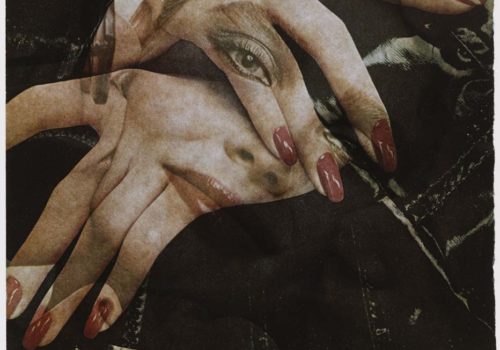Obsessed with popular culture and its effects on society, Robert Heinecken (1931-2006) called himself a “para-photographer” because his work lies on the outskirts of the medium. He’s known for having skillfully manipulated press photographs, undermining their authority at a time when the cultural image was exploding in the United States. From the 1960s to the 1990s, this artist from Denver, Colorado, picked apart the images of our world using photography, sculpture, engraving and collage. Between his photographs from newspapers, magazine and television—many of them pornographic—he dreamed up analogies and sparked confrontations, physically juxtaposing many of them, in order to push the viewers to question their visual surroundings, exploring themes of kitsch, sex and the body while offering a critique of American commercialism.
The most iconic series of Heinecken’s is undoubtedly Are You Rea (1964-68), 25 photograms made from over 2,000 magazine pages taken from Life, Time and Woman’s Day superimposed into a single image. Ads for Coppertone sunscreen, spaghetti and Wessex carpets share the frame with article about John F. Kennedy, moving from the commonplace to more seductive imagery of women, violence and the male body. Another recurring element in Heinecken’s work the female nude, which he dissects and reassembles into a series of hilly landscapes made from breasts and buttocks. (Figure Horizon, 1971), or turns into one of his geometric “photopuzzles” which invite the viewer to explore the different possible configurations of the human body.
In the exhibition hall at MoMA, which is holding the first retrospective of Heinecken’s work since his death, the plexiglass containing a series of magazine spreads makes one smile. Heinecken observed magazines closely, but he also made them, or rather, remade them. These pieces show pages from magazines like Time next to those from pornographic magazines like Cavalcade. To the left, a nude young woman kneels on a leopard-print couch with her back to the camera; to the right, an elderly woman looks on to this imaginary scene with a smile (Periodical #4, 1971). In another example, the left page shows two young women in traditional clothing standing before what seems to be a church. Facing them are two other young women, nude and making love (Periodical #3, 1970). Later, Life in the Time of War (1993) juxtaposes a publicity photograph of an alluring woman in a bathing suit with a soldier from the Gulf War, sitting with his head between his hands. Heinecken would leave the doctored magazines in waiting rooms or slip them into newsstands.
“I do something to see what it looks like,” said Heinecken, “and to see if it can look like something else.” Throughout his career, the artist toyed with the normalizing effect of mass media, which had become for him a purveyor of unwitting surrealism. With the diversity of his methods and the themes he explored, his work is like nothing else (although parts are reminiscent of pop art). Heinecken diagnosed the ills of his society and left his mark on the artistic experiments of the final decades of the 20th century.
Robert Heinecken: Object Matter
The Works Reflect Heinecken’s Obsession with Popular Culture and Its Effects on Society
March 15–September 7, 2014
MOMA
11 W 53rd St
New York, NY 10019
USA
















